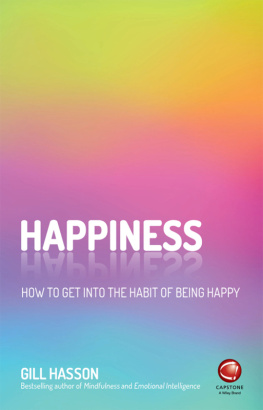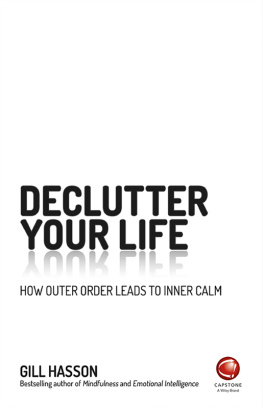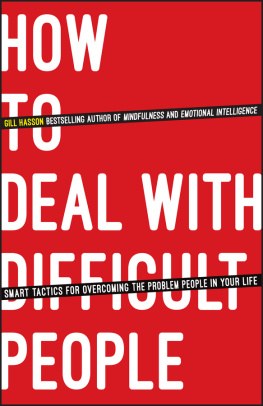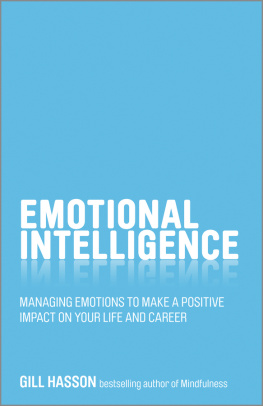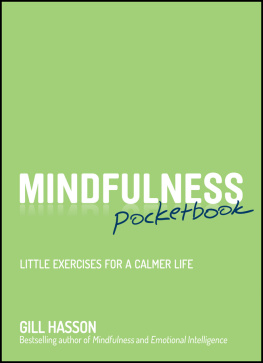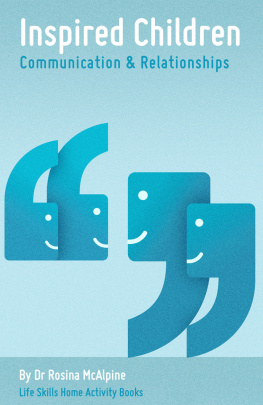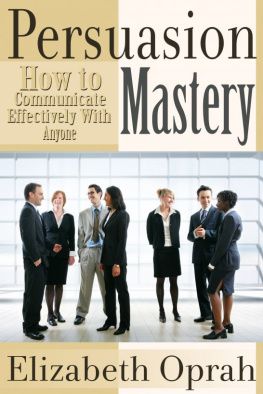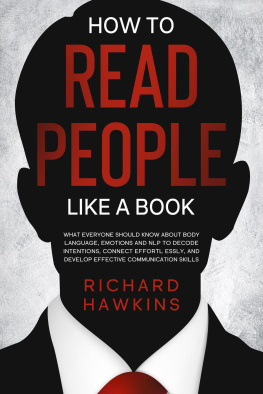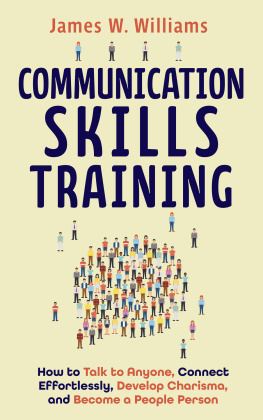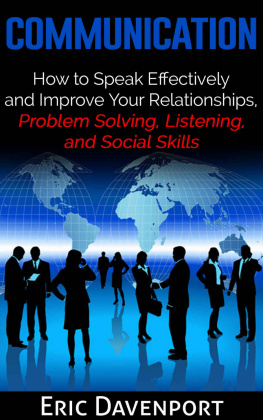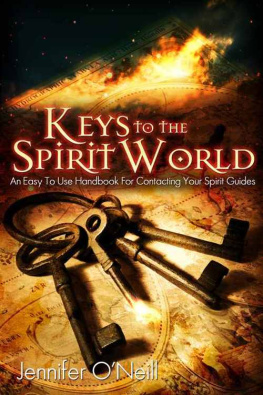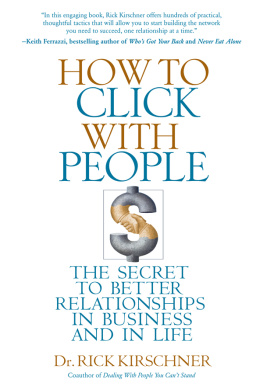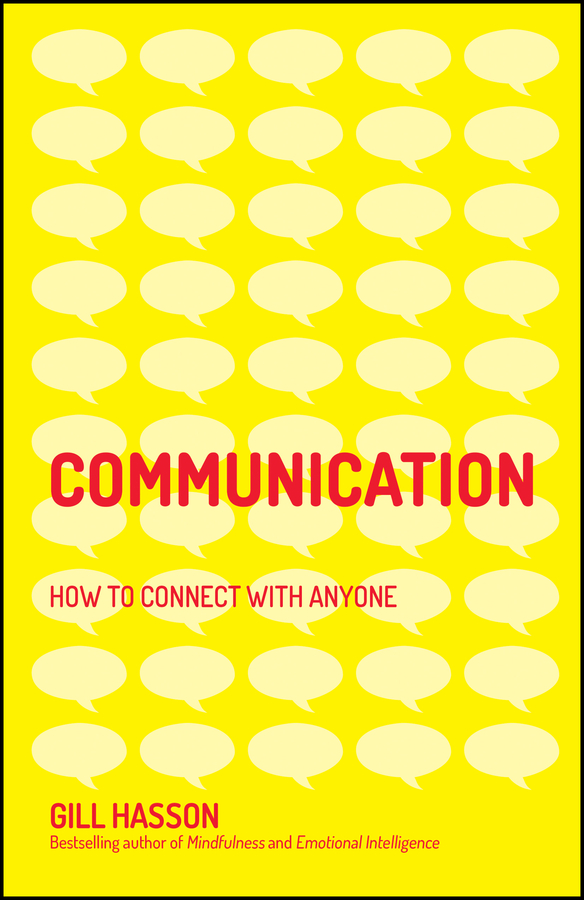
Table of Contents
Guide
Pages
Communication
How to Connect with Anyone
Gill Hasson

This edition first published 2019.
2019 Gill Hasson
Registered Office
John Wiley & Sons Ltd, The Atrium, Southern Gate, Chichester, West Sussex, PO19 8SQ, United Kingdom
For details of our global editorial offices, for customer services and for information about how to apply for permission to reuse the copyright material in this book please see our website at www.wiley.com.
Gill Hasson has asserted her right under the Copyright, Designs and Patents Act, 1988, to be identified as the author of this Work.
All rights reserved. No part of this publication may be reproduced, stored in a retrieval system, or transmitted, in any form or by any means, electronic, mechanical, photocopying, recording or otherwise, except as permitted by the UK Copyright, Designs and Patents Act 1988, without the prior permission of the publisher.
Wiley publishes in a variety of print and electronic formats and by printondemand. Some material included with standard print versions of this book may not be included in ebooks or in printondemand. If this book refers to media such as a CD or DVD that is not included in the version you purchased, you may download this material at http://booksupport.wiley.com. For more information about Wiley products, visit www.wiley.com.
Designations used by companies to distinguish their products are often claimed as trademarks. All brand names and product names used in this book are trade names, service marks, trademarks or registered trademarks of their respective owners. The publisher is not associated with any product or vendor mentioned in this book.
Limit of Liability/Disclaimer of Warranty: While the publisher and author have used their best efforts in preparing this book, they make no representations or warranties with the respect to the accuracy or completeness of the contents of this book and specifically disclaim any implied warranties of merchantability or fitness for a particular purpose. It is sold on the understanding that the publisher is not engaged in rendering professional services and neither the publisher nor the author shall be liable for damages arising herefrom. If professional advice or other expert assistance is required, the services of a competent professional should be sought.
Library of Congress CataloginginPublication Data is Available
ISBN 9780857087508 (paperback)
ISBN 9780857087430 (ePDF)
ISBN 9780857087539 (ePub)
Cover Design: Wiley
Cover Image: madtom/Shutterstock
To Dan with love from Mum:
Carpe diem. Seize the day, boys. Make your lives extraordinary.
Dead Poets Society
Introduction
In 2017, Glenda and Raphi Savitz moved to Newton, Massachusetts with their 2yearold daughter Samantha, who was born deaf. When they were out in the community, local people noticed that Glenda and Raphi were signing to Samantha. Some of them decided they wanted to learn how to communicate with Samantha too, so 20 neighbours and friends got together and hired a teacher to run a weekly evening class and teach them American Sign Language. Samantha's Mum, Glenda, told a journalist: Samantha's whole personality changes when she meets someone she can communicate with.
Human beings are social beings. It's inherent in us to want to communicate and connect with each other.
We're born with an innate ability to communicate. We learn to communicate by listening to and/or watching other people; practising and then adjusting how and what we communicate according to the response we receive. We learn that there are basic rules of communication, known as the rules of reciprocal communication. This means that we have to take turns to talk and that we need to wait until the other person has finished talking before we say something. We learn, too, that the second person to say something should respond to what the first person has said, rather than introduce a completely new subject.
Is it really that simple? Of course not. Why? Because communication is not a straightforward process, it's a dynamic process, influenced by all the complexities and uncertainties of human behaviour. Even with the most simple of communications, both people may think they understand what's passed between them, but often, what's occurred is a miscommunication.
of this book identifies some of the issues that contribute to miscommunication; it describes how cultural, generational, and individual differences in how we communicate often lead to misunderstandings.
It's not just what we say, but what we hear, or what we think we hear that also leads to misunderstandings. Our assumptions, beliefs, judgements, and emotional states are often behind much of what we misconstrue and misinterpret. They can easily distort what the other person is saying.
So, although our ability to communicate is innate, we're not always that good at it! However, as well as being innate, communication is also a skill; it's an ability that we can learn to develop and improve.
In this book, the emphasis is on assertive communication. Assertive communication encourages each person to take part in a shared process; one that helps promote a genuine connection between people; a connection that involves respect and trust, confidence and empathy between people. What to Say and How to Say it describes assertive communication. It emphasizes the need to be clear and direct when you're talking to someone else; to do it in a way that makes it easy for them to listen and to understand what you mean.
Whether you're explaining your ideas, giving your opinion, giving directions, encouraging or persuading someone else, their perspective or knowledge concerning what you're talking about might be different from yours. What do they already know or not know? What might they feel about what you're talking about? Is this a good time and place for them to listen to what you have to say?
You need to be prepared to adapt the way you communicate; to be aware that how you say something can help make it easy for other people to listen and to understand what you mean. In , and in other chapters, there's advice on talking and listening to someone who has communication difficulties and you'll read that the advice for talking and listening to someone with communication difficulties can be followed by all of us, whoever we're talking or listening to.
Just as you do when you're talking to someone, when you put something in writing you need to make it easy for the other person the reader to understand you. When you're talking with another person in person or on the phone you can get an immediate response and if there are any obvious misunderstandings you're able to clarify, there and then, what you mean. But when you communicate in writing this doesn't necessarily happen, so you need to be even more sure to make your meaning clear. explains how you can do this. And, as a bonus, once you've developed the ability to write more effectively, you'll find that what and how you say things also improves.
is about listening. Dolly Parton once said It takes an awful lot of work to look this cheap. The same is true for listening; it takes a lot of work to do something that appears to take no effort.
The way to become an effective listener is to learn and practise what's known as active listening. And that requires some work on your part. But it's
Next page

